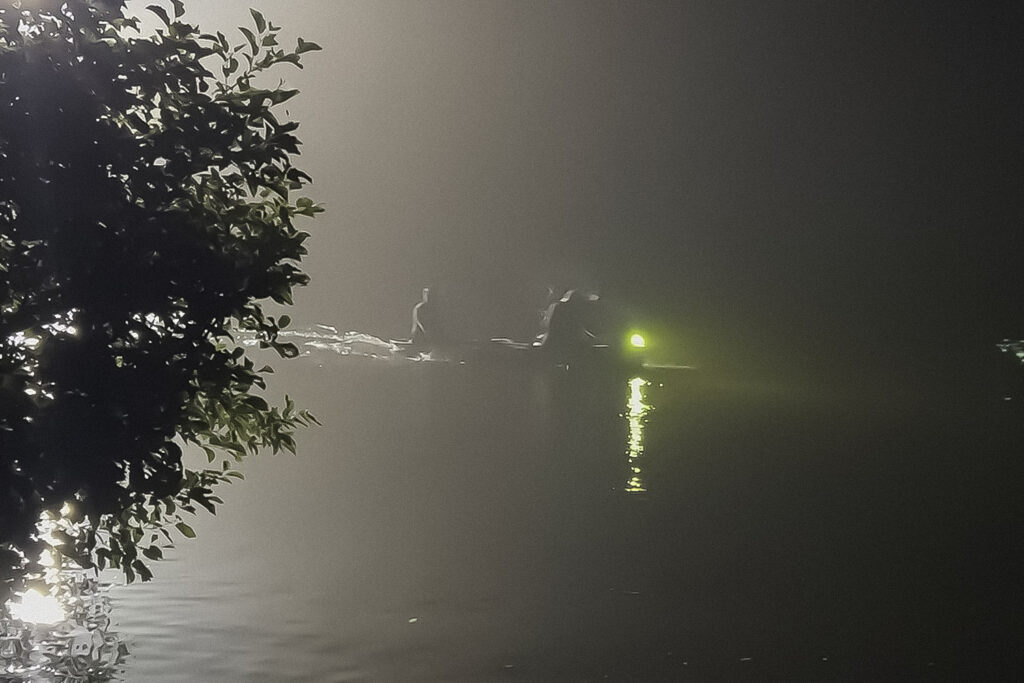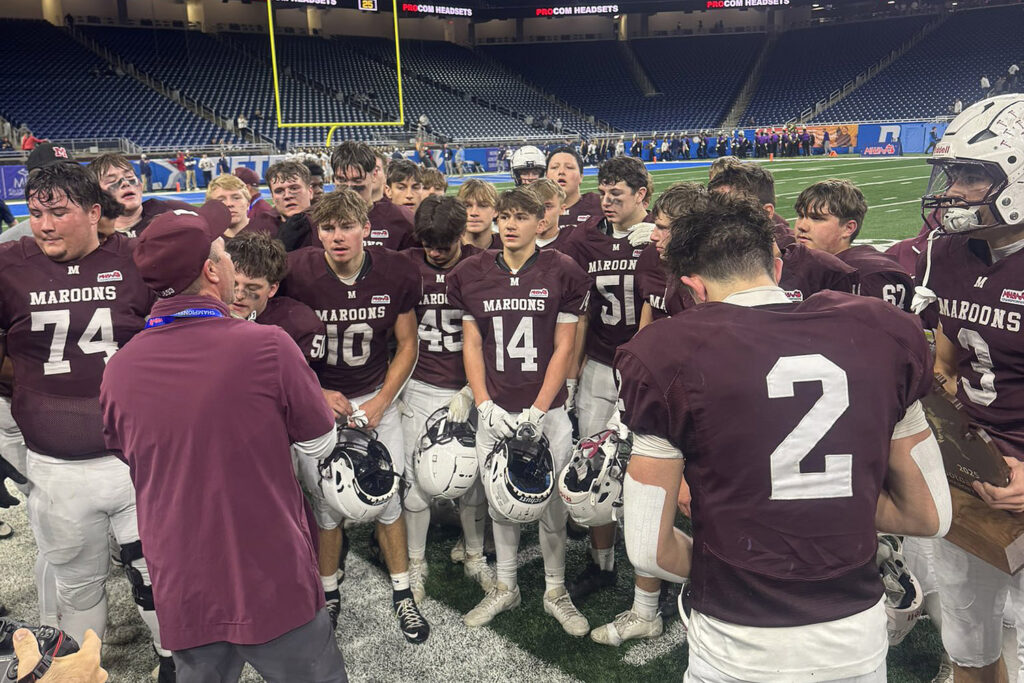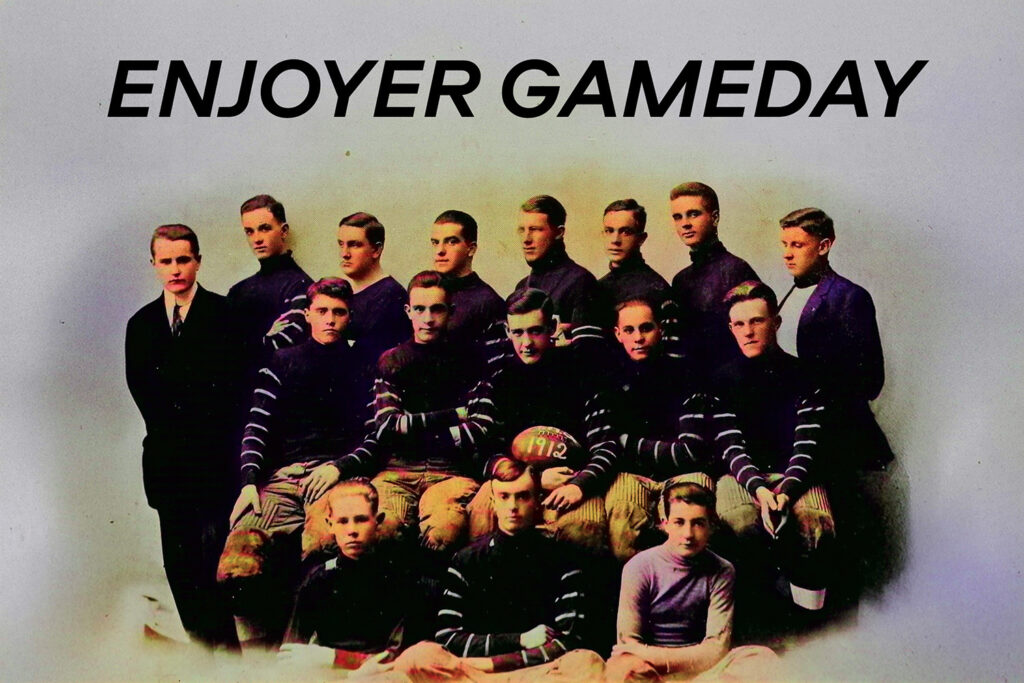Grayling — They call it “The Marathon”—no need for qualifiers if you’re from here.
For 76 years, the Au Sable River Canoe Marathon has pulled paddlers and spectators into the woods, along the water, and deep into the night. It begins with a sprint through the streets of Grayling and doesn’t end until the racers reach Oscoda, 120 miles away, carried only by the river and their endurance.
This year, I am following them.
It was my first time attending. I’d heard the stories: the midnight start, the banks lined with cheering families, the volunteers lighting the way at river access points, and the quiet stretches where all you hear are the paddles and the current.

I’m not a racer—just someone who wanted to understand why, year after year, people chase this race downriver in the dark.
Grayling hummed with energy Saturday afternoon as Main Street became a festival: Classic cars lined up along the curbs, vendors served cherry lemonade and hot sandwiches, and food trucks filled the air with the scent of fried onions and sweet pastries.
The buzz of conversation rose and fell like a tide, pulsing with anticipation. Kids waved glow sticks and darted between lawn chairs.

The hill across the street from the start line filled quickly, and soon it was packed with people cheering, waving signs, and calling out names and numbers as teams walked past with their canoes. Some wore team shirts; others held homemade signs. Everyone was cheering for someone.
It’s the kind of community event that feels more like a holiday than a race. For many here, it is: a summer tradition stitched into family calendars and hometown pride.
As the sun dipped below the trees, the golden hour bathed the street in soft light. People checked their watches. The Le Mans-style start was still hours away, but no one wanted to miss a second. There’s a sense that once darkness falls, time itself begins to flow differently—like the river.
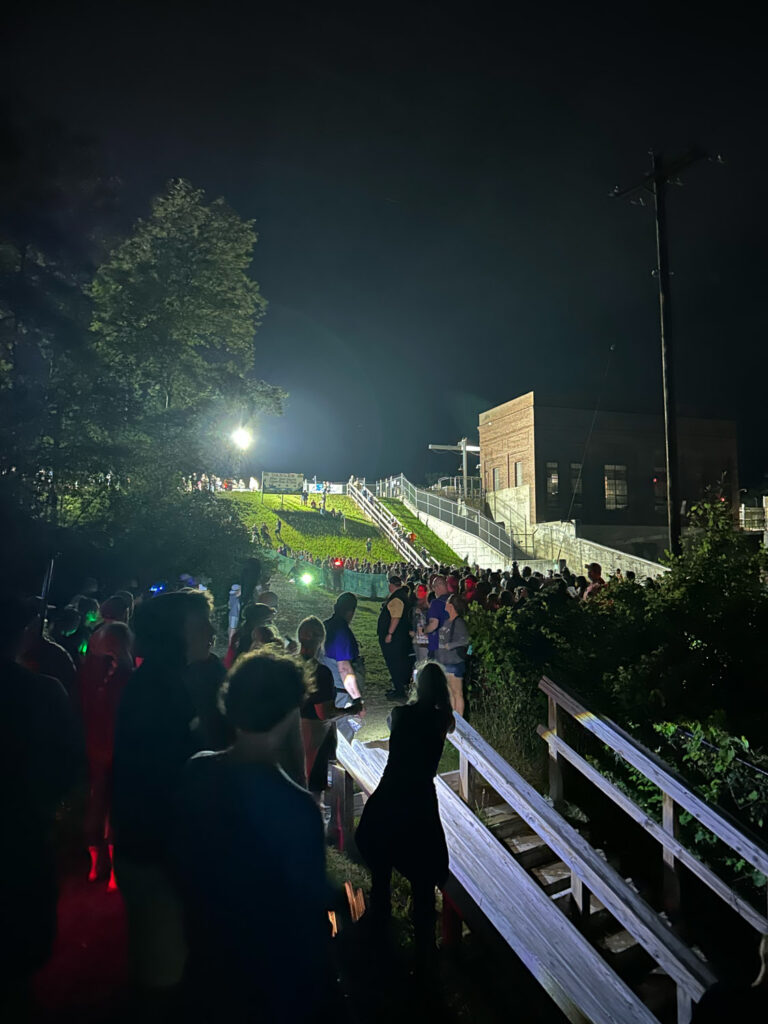
At 9 p.m., the racers gathered on Peninsular Avenue, standing beside their sleek carbon-fiber canoes, ready to run. The crowd lining the streets leaned forward, phones out, children perched on shoulders for a better view. The horn blasted.
Dozens of teams burst into motion, sprinting four blocks through town while carrying their boats overhead. It’s a surreal way to start a 120-mile endurance race—more like a track meet than a marathon—combining power, precision, and adrenaline. You could hear the thundering of shoes on pavement, the clatter of paddles, and the cheers of hundreds propelling them forward.
The crowd roared. The kids cheered.
The start was over in minutes, but it set the tone for the long journey ahead. Canoes hit the water one by one, paddles slicing into the black surface of the Au Sable. A chorus of strokes faded into the distance. From here, the real test began.
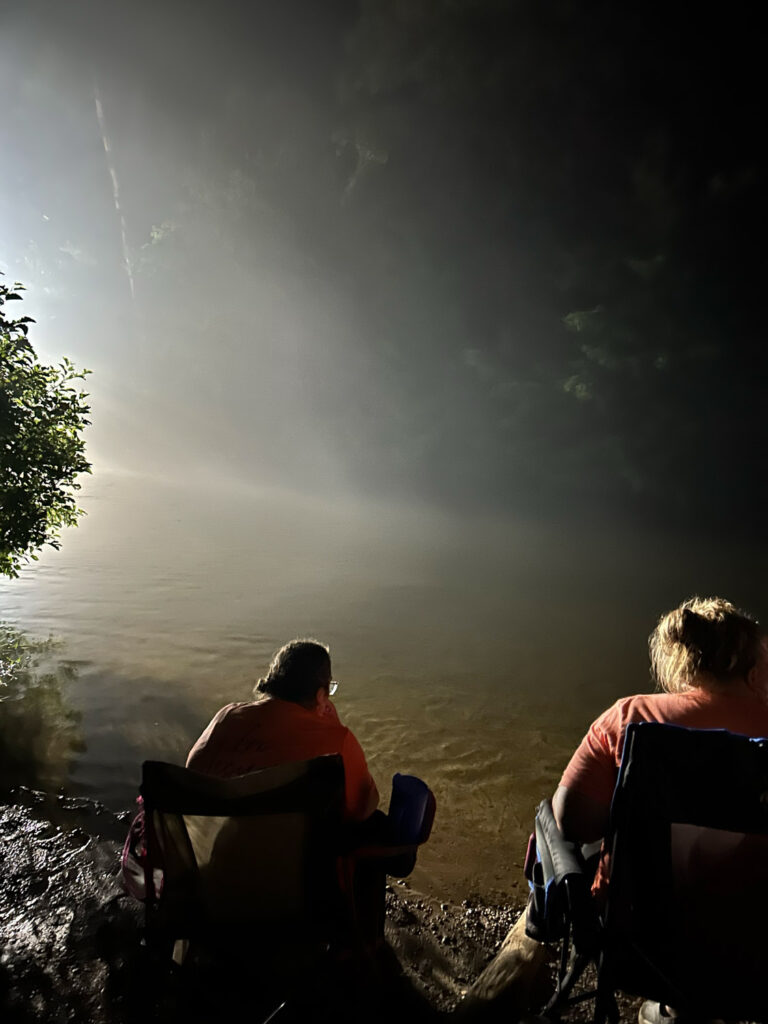
Before reaching McMaster’s Bridge, racers had already passed a series of early checkpoints—Burton’s Landing, Stephan Bridge, and Wakeley Bridge—each drawing dedicated groups of fans with flashlights, chairs, and cowbells to these tucked-away access points. These early stops warm up the night’s rhythm, setting the stage for the deeper night ahead.
I arrived at McMaster’s Bridge at 11:18 p.m. A massive spotlight bathed the bridge and river in silver. Police officers kept the area secure while hundreds of spectators filled every inch of space, many scanning their phones for updates and ETAs.
One woman caught my attention—the mother of a first-time racer on Team 111. She’d watched the race for years, always dreaming her son would one day compete. Her excitement was obvious. Though his team wouldn’t make it to the finish, it didn’t matter. That moment on the bridge was a proud one.
Fog drifted across the water like breath from the river. At Parmalee Bridge around 12:30 a.m., the lighting had dimmed, but the energy hadn’t. Fireworks exploded in the sky as each group of canoes passed beneath us.
By 1:30 a.m., I stood at Camp Ten Bridge directly over the river, watching the paddlers come across the still waters of the Mio Pond and pass beneath us. The crowd, though smaller and younger here, erupted each time a canoe glided beneath our feet.
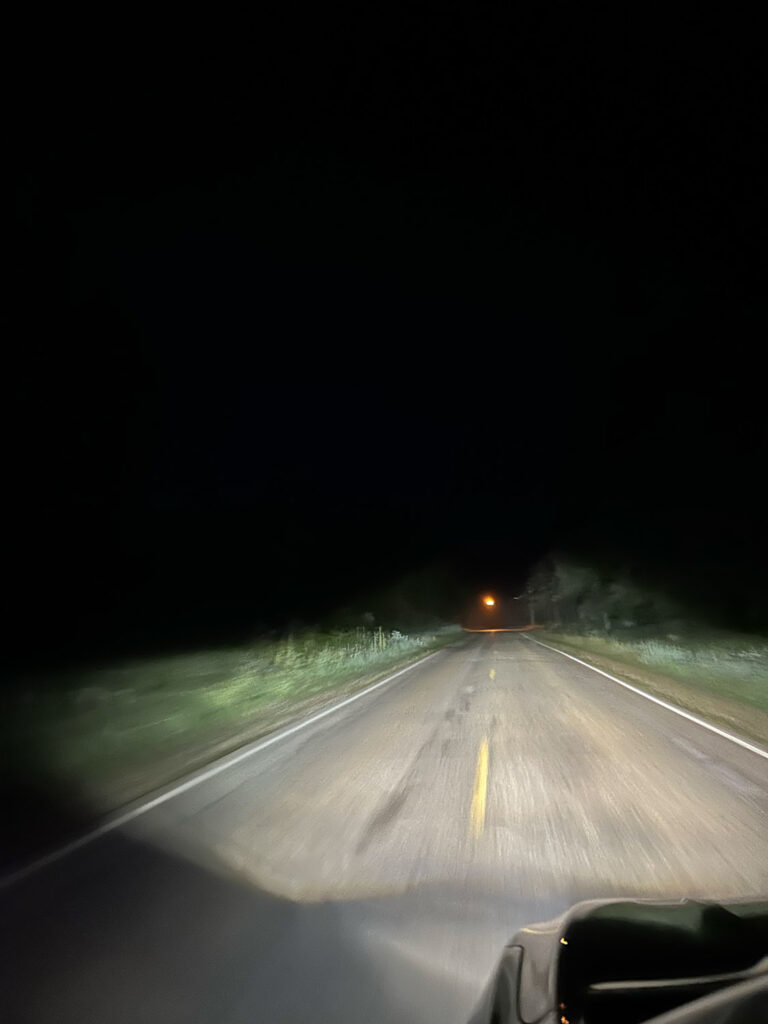
At one point, three boats were bunched tightly together, and one had no lights on at all. I couldn’t tell if they’d lost their lights or never had them. Either way, it added a wild, ghostlike intensity to an already surreal scene.
These checkpoints are all part of a tradition that winds with the river. Each one becomes its own little world, with unique personalities, local traditions, and an energy from the crowd that shifts as the night wears on.
Beyond Camp Ten Bridge, racers began the demanding sequence of dam portages—starting with Mio Dam, followed by Alcona Dam, Loud Dam, Five Channels Dam, Cooke Dam, and Foote Dam. These aren’t just obstacles; they’re tests of coordination, endurance, and timing. Teams must exit the water, carry their canoes, and relaunch with urgency.
By pure accident, I found myself inside the feeder team zone at Mio Dam around 2 a.m. Following the crowd, I somehow ended up at the bottom of the hill just as racers began portaging.
A staff member started pushing out non-team members, but I jokingly said I was with Team 111. It worked. Of course it did. How would they know?
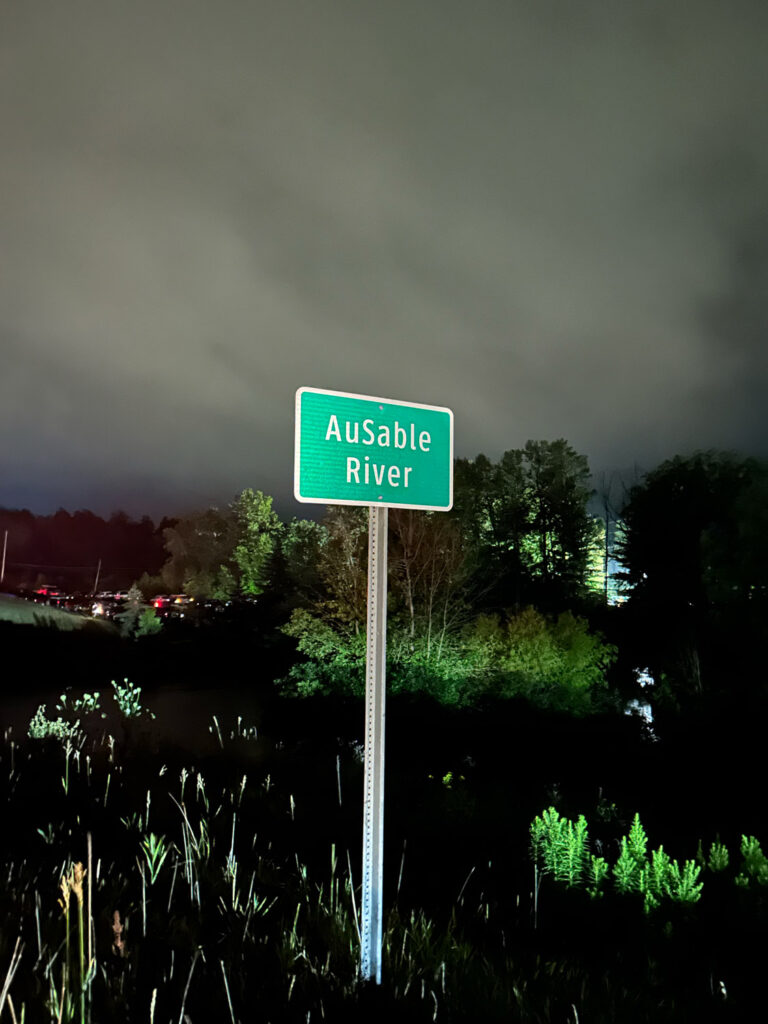
Being that close was incredible. The feeder teams operate like NASCAR pit crews, wading in the water to meet their canoes; handing off water, energy gels, or supplies; and shouting encouragement. The racers barely slowed down before launching back into the water.
I was struck by the dedication. These supporters weren’t just bystanders—they were part of the team, staying up all night to fuel their paddlers through the darkness. That’s devotion.
As the night grew colder and quieter, the crowds at each stop began to thin. But the paddlers kept pushing, stroke by stroke. Between checkpoints, there were stretches of total darkness, the only light coming from distant headlamps or the reflection of stars on the water.
By sunrise, the fastest teams neared the final stretch. Oscoda slowly came alive, while Grayling had gone quiet hours before. The finish line, beneath the Mill Street Bridge, became the last checkpoint for families, fans, and exhausted racers.
Some arrived to cheers. Others arrived to silence. All arrived changed.
This year’s winners, Travis Mecklenburg of Grayling and Weston Willoughby of Traverse City, made history by becoming the first all-Michigan team to claim victory. Paddling as canoe 99, they crossed the finish line in an astonishing 14 hours and 14 minutes.
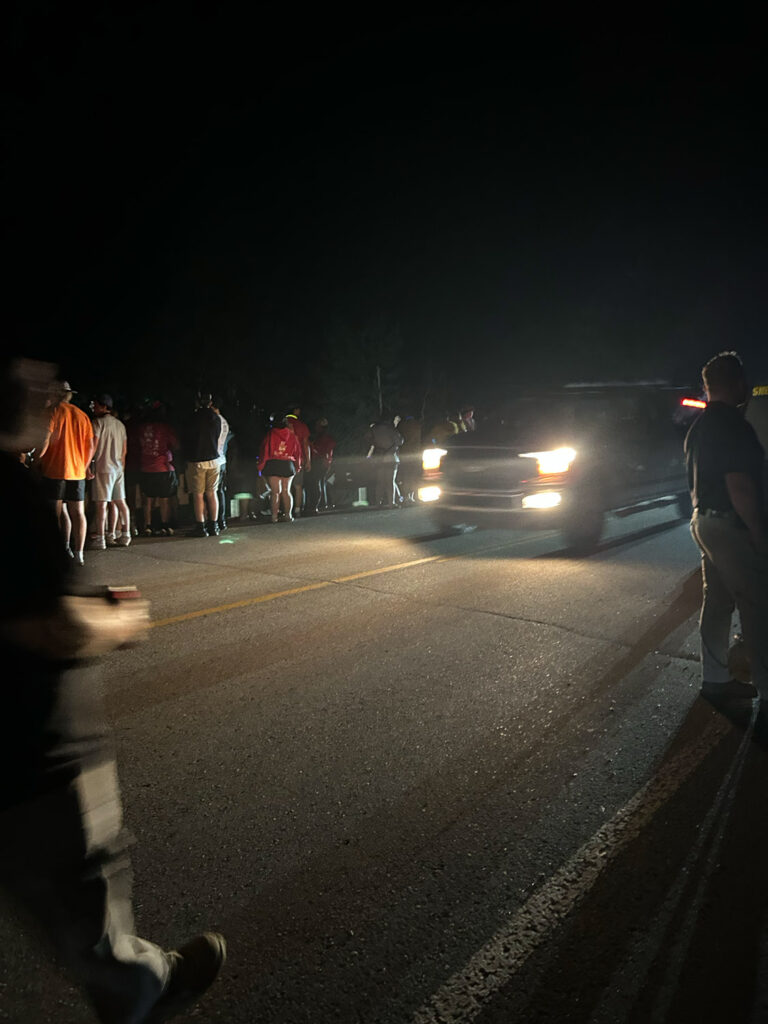
Their lead was solid from the start and never relinquished through the portages and stretches that wore down the competition. Watching them finish felt like witnessing something historic—two locals who grew up around the river, finally conquering it together.
Being an enjoyer isn’t just about watching events on a screen—it’s about showing up and soaking in the moments that make Michigan traditions like this so special. Whether it’s leaning over a bridge railing in the middle of the night, watching racers glide by in near silence, or standing among hundreds at the finish line as history is made, this experience reminded me why we follow the river at all.
The Marathon isn’t just a race. It’s a passage. And for one night every year, the river doesn’t sleep—and neither do we.
Landen Taylor is a musician and explorer living in Bay City. Follow him on Instagram @landoisliving.
